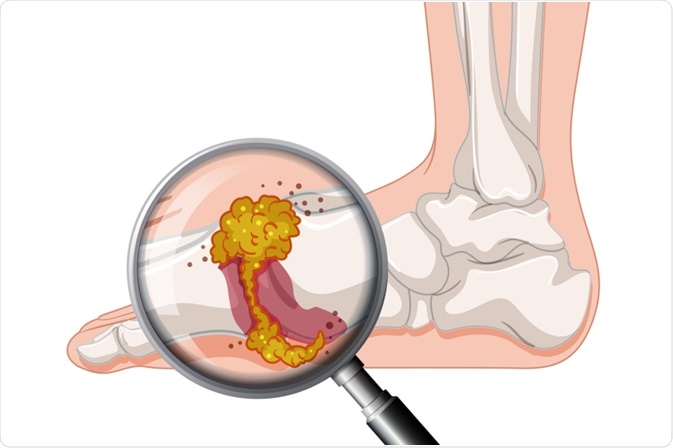Foods High in Uric Acid Understanding the Link to Gout and How to Manage

Foods High in Uric Acid, Gout is a type of arthritis that is caused by high levels of uric acid in the blood. It is a painful condition that can affect anyone, but it is more common in men and people over the age of 40. While genetics and other factors play a role in the development of gout, diet also plays a significant role in managing uric acid levels in the body.

In this blog post, we will discuss the link between uric acid and gout, the role of diet in uric acid levels, and the top foods high in uric acid. We will also provide tips on how to manage uric acid through nutrition and create a balanced diet for optimal uric acid control.
Understanding Uric Acid
Uric acid is a waste product that is produced when the body breaks down purines, which are found in many foods. Normally, uric acid dissolves in the blood and is excreted through the kidneys. However, if the body produces too much uric acid or if the kidneys cannot get rid of it efficiently, it can build up in the blood and form crystals in the joints, leading to gout.
Uric acid levels can also be affected by certain medical conditions such as kidney disease, diabetes, and high blood pressure. Certain medications, such as diuretics, can also increase uric acid levels in the body.
The Role of Diet in Uric Acid Levels
Diet plays a crucial role in managing uric acid levels in the body. Some foods contain high levels of purines, which are broken down into uric acid. Consuming these foods in excess can lead to an increase in uric acid levels, making them a major risk factor for gout.

It is important to note that not all purine-rich foods are created equal. Some foods contain higher levels of purines than others, and some people may be more sensitive to purines than others. Therefore, it is essential to understand which foods are high in uric acid and how they can affect your body.
Top Foods High in Uric Acid
Here are the top foods that are high in uric acid:
Meat and Seafood
Meat and seafood are two of the biggest culprits when it comes to high uric acid levels. They contain high levels of purines, which are broken down into uric acid in the body. Some of the worst offenders include organ meats such as liver, kidney, and sweetbreads, as well as red meat like beef, lamb, and pork. Seafood such as anchovies, sardines, mackerel, and herring are also high in purines.
Alcohol
Alcohol consumption has been linked to increased uric acid levels in the body. Beer, in particular, has been found to increase uric acid levels due to its high purine content. Studies have shown that beer drinkers have a higher risk of developing gout compared to non-drinkers.

Sugary Drinks
Sugary drinks, such as soda and fruit juices, have also been linked to high uric acid levels. These drinks contain high levels of fructose, which can increase uric acid production in the body. Studies have shown that regular consumption of sugary drinks can increase the risk of gout by up to 85%.
High-Fructose Fruits
While fruits are generally considered healthy, some fruits contain high levels of fructose, which can increase uric acid levels in the body. Examples of high-fructose fruits include apples, pears, grapes, and mangoes. It is important to note that not all fruits are high in fructose, and some fruits, such as cherries, have been found to have anti-inflammatory properties that can help lower uric acid levels.
Yeast
Yeast is a type of fungus that is commonly used in baking and brewing. It is also found in many processed foods such as bread, crackers, and pastries. Yeast contains high levels of purines, which can increase uric acid levels in the body.

Avoiding Purines in Your Diet
While it may seem overwhelming to avoid all foods high in uric acid, it is not necessary to completely eliminate them from your diet. The key is to limit your intake of these foods and make healthier choices overall.
Here are some tips for avoiding purines in your diet:
- Limit or avoid meat and seafood, especially organ meats and red meat.
- Choose lean cuts of meat and poultry instead of fatty cuts.
- Opt for plant-based protein sources such as beans, lentils, and tofu.
- Avoid sugary drinks and opt for water or unsweetened beverages instead.
- Limit your intake of high-fructose fruits and choose low-fructose options like berries and citrus fruits.
- Read food labels and avoid products that contain yeast or high-fructose corn syrup.
Managing Uric Acid Through Nutrition
In addition to avoiding foods high in uric acid, there are also dietary changes you can make to help manage uric acid levels in the body. Here are some tips for managing uric acid through nutrition:
Stay Hydrated
Drinking plenty of water can help flush out excess uric acid from the body. Aim for at least 8 glasses of water per day and avoid sugary drinks and alcohol.
Consume Low-Purine Foods
Incorporating low-purine foods into your diet can help reduce uric acid levels. These include whole grains, low-fat dairy products, and most fruits and vegetables. Some studies have also shown that consuming low-fat dairy products can help lower the risk of gout.

Increase Your Intake of Vitamin C
Vitamin C has been found to lower uric acid levels in the body. Foods high in vitamin C include citrus fruits, berries, bell peppers, and leafy greens.
Limit Alcohol Consumption
As mentioned earlier, alcohol consumption can increase uric acid levels in the body. If you do choose to drink, limit your intake to no more than one drink per day for women and two drinks per day for men.
The Link Between Uric Acid and Gout
Gout is a form of arthritis that is caused by high levels of uric acid in the blood. When uric acid levels are too high, it can form crystals in the joints, leading to inflammation and pain. While not everyone with high uric acid levels will develop gout, it is a major risk factor for the condition.
Other factors that can increase the risk of gout include genetics, age, gender, and certain medical conditions. However, diet remains one of the most significant factors in managing uric acid levels and preventing gout flare-ups.

Dietary Tips for Lowering Uric Acid
Here are some additional dietary tips for lowering uric acid levels:
- Eat a balanced diet that includes a variety of whole foods.
- Avoid crash diets or fasting, as these can increase uric acid levels.
- Limit your intake of high-fructose corn syrup and other added sugars.
- Choose complex carbohydrates over simple carbohydrates.
- Avoid processed and fried foods, which can contain high levels of purines.
- Incorporate anti-inflammatory foods into your diet, such as cherries, turmeric, and ginger.
Foods to Limit for Uric Acid Control
In addition to avoiding foods high in uric acid, there are also specific foods that should be limited for optimal uric acid control. These include:
Red Meat
Red meat, especially organ meats like liver and kidney, should be limited or avoided altogether. These meats contain high levels of purines, which can increase uric acid levels in the body.
Seafood
Seafood such as anchovies, sardines, mackerel, and herring are also high in purines and should be limited for those with gout. However, it is important to note that not all seafood is high in purines, and some options, such as salmon and tuna, are considered low-purine choices.

Alcohol
Alcohol consumption has been linked to increased uric acid levels in the body, making it a major risk factor for gout. Beer, in particular, has been found to increase uric acid levels due to its high purine content.
Incorporating Low-Purine Foods into Your Meals
Creating a balanced diet for uric acid management does not mean you have to sacrifice flavor or variety. Here are some tips for incorporating low-purine foods into your meals:
- Choose lean cuts of meat and poultry instead of fatty cuts.
- Opt for plant-based protein sources such as beans, lentils, and tofu.
- Use herbs and spices to add flavor to your meals instead of salt.
- Experiment with different types of grains, such as quinoa, brown rice, and barley.
- Incorporate a variety of fruits and vegetables into your meals.
- Snack on low-purine options such as nuts, seeds, and low-fat dairy products.
Creating a Balanced Diet for Uric Acid Management
A balanced diet for uric acid management should include a variety of whole foods, including lean proteins, complex carbohydrates, healthy fats, and plenty of fruits and vegetables. It is also essential to stay hydrated by drinking plenty of water and limiting alcohol consumption.
Here is an example of a balanced meal plan for uric acid management:

Breakfast
- Oatmeal with low-fat milk, topped with berries and a sprinkle of cinnamon.
- Whole grain toast with avocado spread and a boiled egg.
Lunch
- Grilled chicken breast with quinoa and roasted vegetables.
- Mixed greens salad with cherry tomatoes, cucumbers, and balsamic vinaigrette.
Snack
- Apple slices with almond butter.
- Low-fat Greek yogurt with chopped nuts and a drizzle of honey.
Dinner
- Baked salmon with brown rice and steamed broccoli.
- Lentil soup with whole grain crackers.
Conclusion
Gout is a painful condition that is caused by high levels of uric acid in the blood. While genetics and other factors play a role in its development, diet also plays a significant role in managing uric acid levels in the body. By understanding which foods are high in uric acid and making dietary changes, it is possible to manage uric acid levels and prevent gout flare-ups.

Incorporating a balanced diet that includes a variety of whole foods and limiting high-purine foods can help keep uric acid levels in check and improve overall health. Remember to stay hydrated, limit alcohol consumption, and consult with a healthcare professional for personalized dietary advice.
